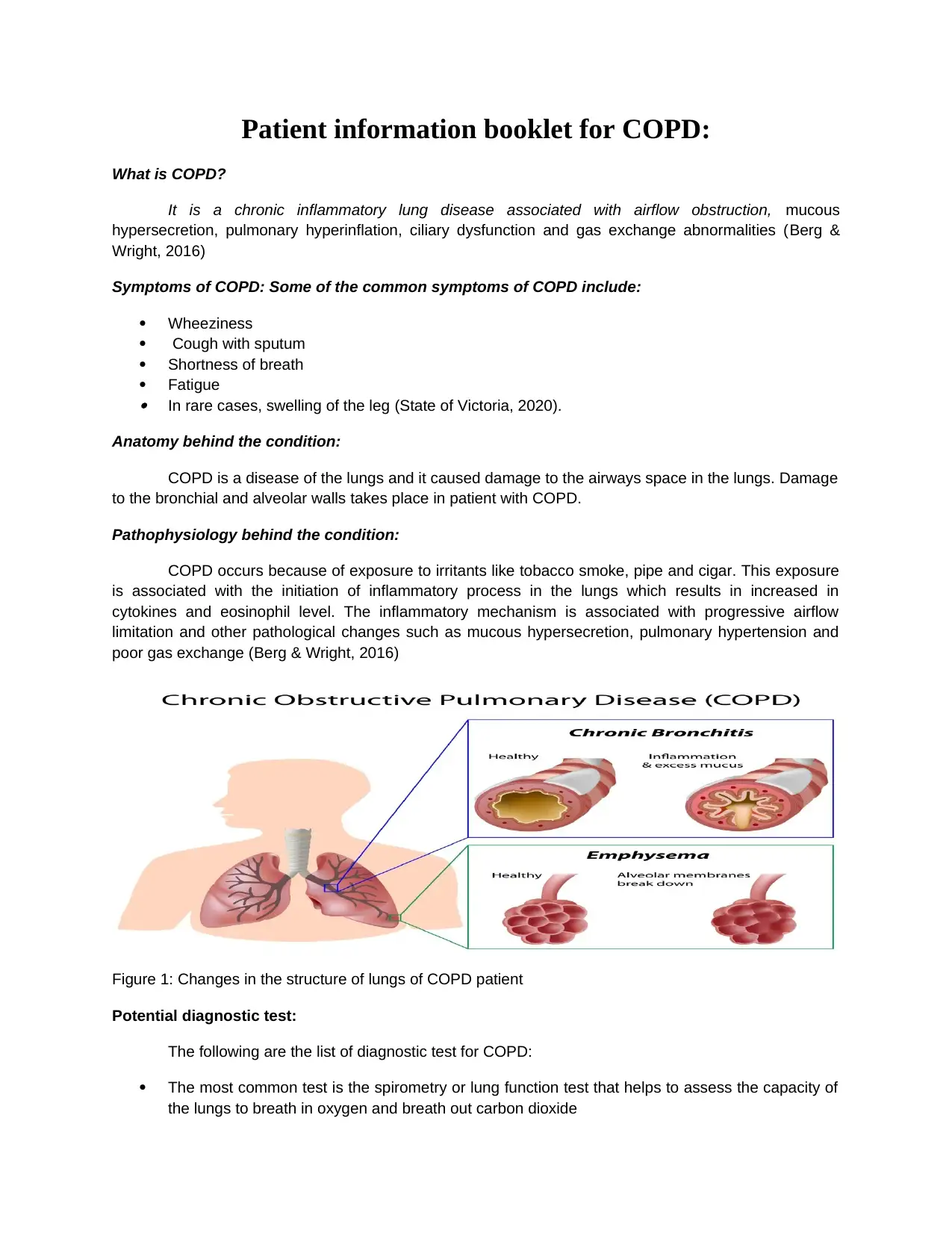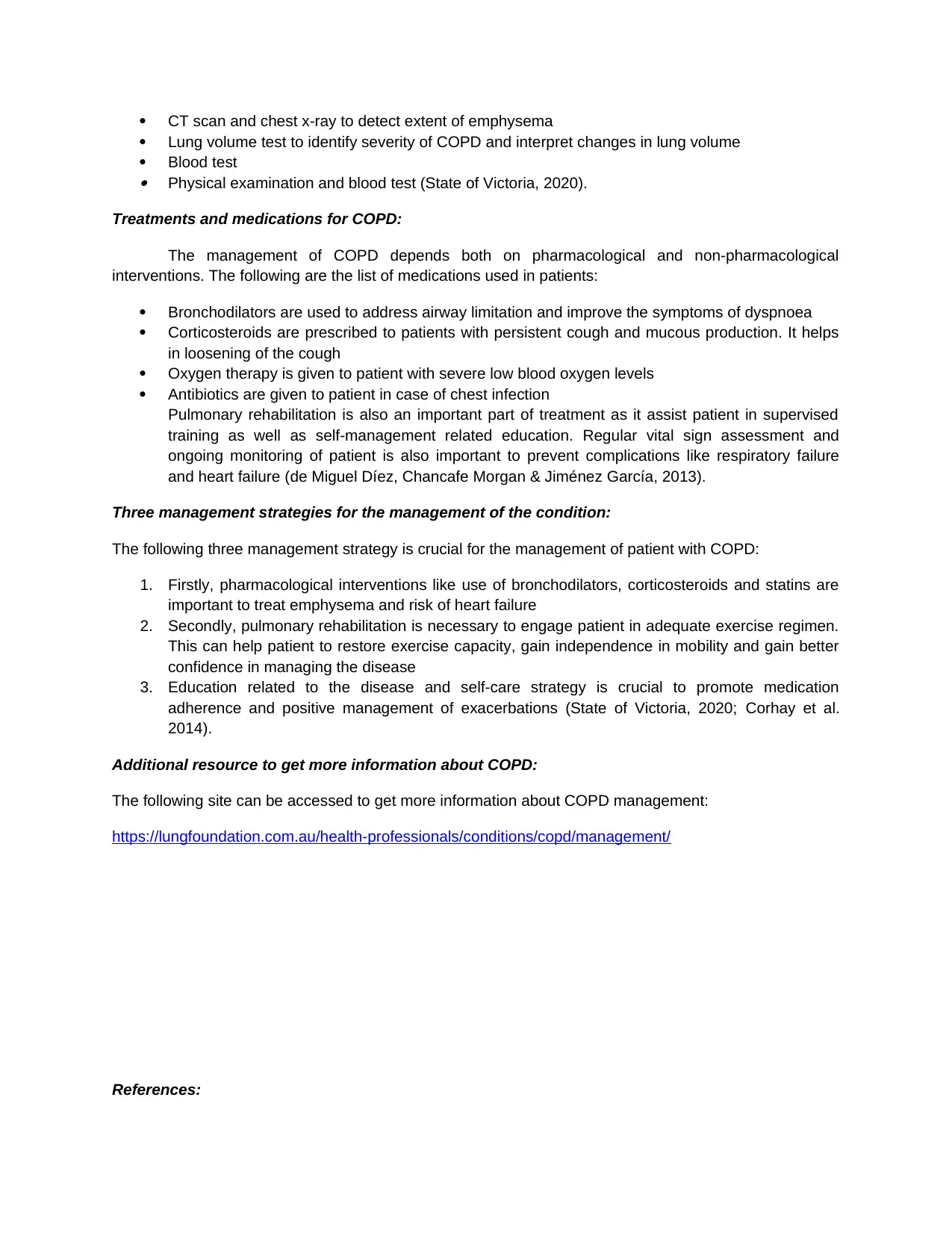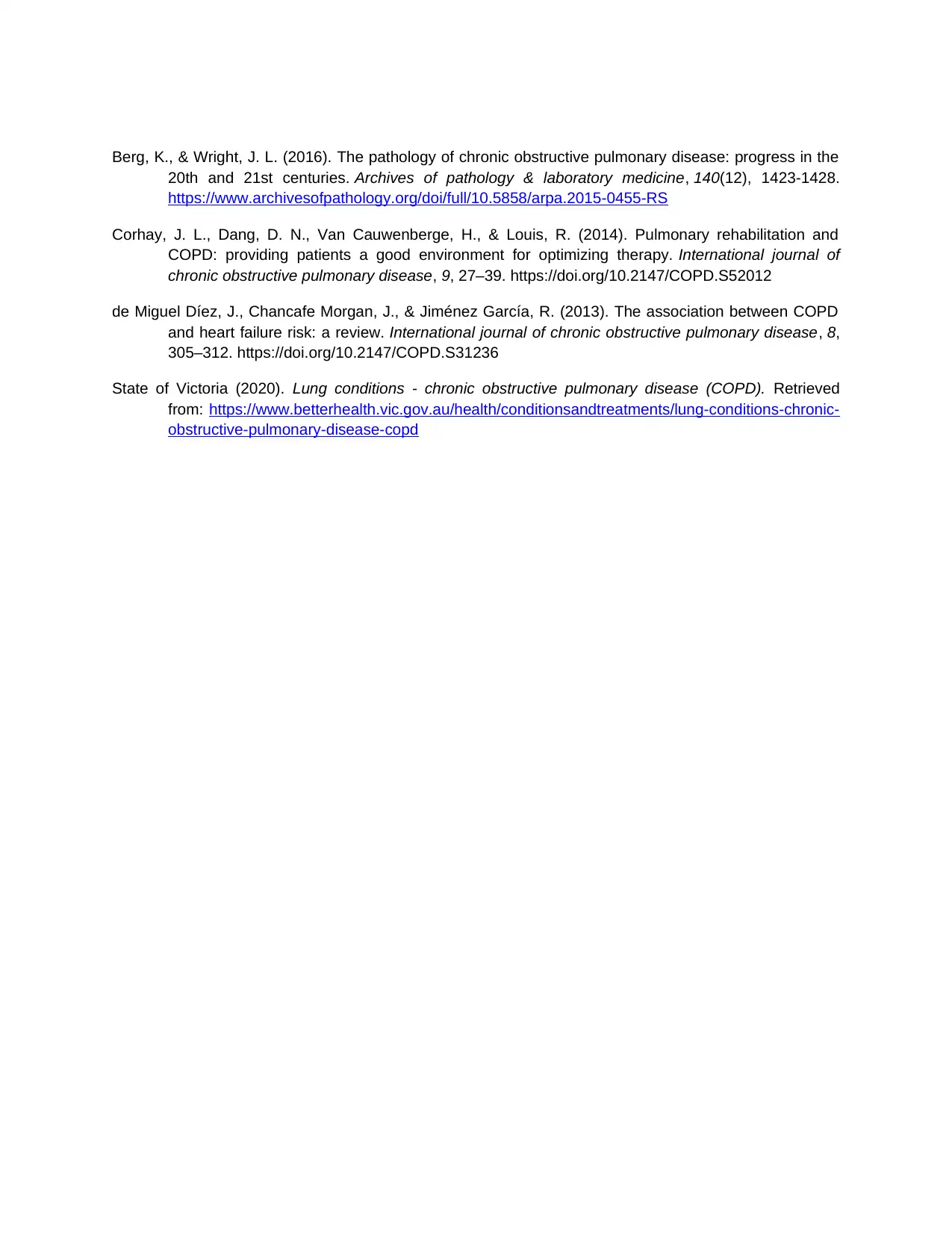Comprehensive Patient Information Booklet for COPD Management
VerifiedAdded on 2022/09/23
|3
|737
|27
Report
AI Summary
This report presents a patient information booklet designed to educate individuals about Chronic Obstructive Pulmonary Disease (COPD). The booklet begins by defining COPD as a chronic inflammatory lung disease characterized by airflow obstruction, mucous hypersecretion, and other abnormalities. It outlines common symptoms like wheeziness, cough, shortness of breath, and fatigue. The report then delves into the anatomy and pathophysiology of COPD, explaining the damage to airways and the inflammatory processes triggered by irritants like tobacco smoke. Diagnostic tests, including spirometry, CT scans, and lung volume tests, are discussed. The booklet also covers various treatments and medications, such as bronchodilators, corticosteroids, and oxygen therapy, as well as the importance of pulmonary rehabilitation. Finally, it highlights three key management strategies: pharmacological interventions, pulmonary rehabilitation, and patient education. The booklet also includes links to additional resources for further information.
1 out of 3










![[object Object]](/_next/static/media/star-bottom.7253800d.svg)